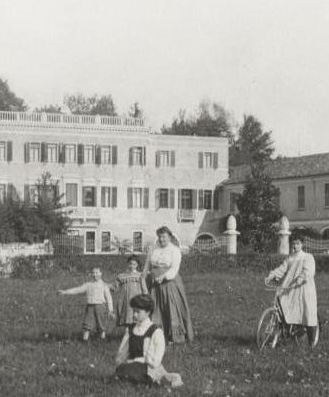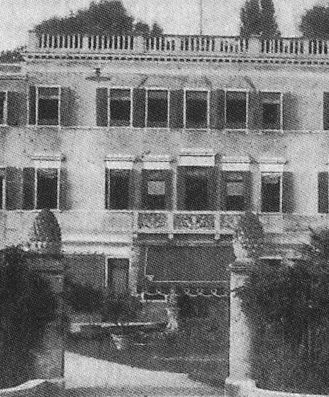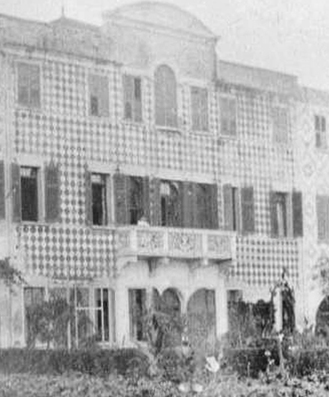If you are interested in investing in the property please get in touch with us through the contact form.
We will be pleased to consider any request and evaluate your proposals.
Historical Excerpt About The Villa
On the Venetian Terraferma in the locality Chirignago, about a fifteen minutes drive from Venice, the great historic complex of Villa Friedenberg dating back to the eighteenth century dominates the landscape seen from the long, tree-lined avenue of Risorgimento street, which connects directly to the ancient church in the city center.
Protected by ministerial constraint, the complex is composed of several excellences and develops as an L shape around the entrance garden, which hosts two beautiful century-old magnolias (Magnolia Grandiflora) and the remains of a fountain of the eighteenth century, with, at the center, the large body of the villa consisting of a building that develops longitudinally for forty meters with shapes and proportions typical of the building tradition of the Venetian villa.
The historical information on the Villa are scarce, making it difficult a certain dating, probably the Villa was built on a more ancient foundation.
In the city of Chirignago, Venice - the Scalfuroto (1) was pointing to some buildings and to the annexed garden, as the palace and the farmhouse of Prezzato Pietro. After many archive researches we hypothesize that Prezzato Pietro was Venetian. Agostino's son former Great Guard of the Venice School of Mercy, died in Venice on the 8.7.1795 (2). In the will wrote in Venice on the 2.2.1785 Prezzato Pietro was leaving in the property in heredity to the son Gio' Prezzato and to his male Prezzato legitimates descendants, born from a legitimate wedding” (3).
This transmission of the estate, is registered in the the Napoleonic land register (1808) (4).
that identifies the property of Giovanni Prezzato with the name of “house and court for holiday use” and “house and court for massariotto use”.
From heir to heir, the property was sold in the 1877 to a General of the Royal Italian Army, Giulai, and in the end to the family Friedenberg.
Gallo (5), lists the Villa with the name of “Giulai-Emma”, but it has to be specified that the name of the woman is referred to Friedenberg's wife, to whom the property was dedicated.
Afterwards, the heirs sold the building to the current owner.
Now, the building is featured by the owner's house and the adjacent buildings, also many interventions belonging to many ages can be noticed. The state of preservation and the lack of documents don't permit to specify when those works were done.
The front of the Villa appears different from the photo of the early 900s (6) while Gallo (7), speaks about remake of the front done in the late 800s. The three-floor building, presents a nineteenth century character but we cannot exclude that this house is a sort of evolution of a precedent building. The Barchessa perpendicular to the Villa, for the form of the neoclassical door, and the face of the elevations, it has been dated to A. Paganella in the middle of the 800s. Another body, on the left of the central nucleus, is dated to the late 700s (9).
The buildings, are surrounded by a green surface, made at the front by a part of meadow, and another part in front of the house with traces of flower bed (1-2), vases and a fountain between two big magnolias (Magnolia Grandiflora). At the back of the estate, there is a garden with many paths, a cave, an ice-house, a little temple and an artificial lake.
On this building burdens a public declaration no. 48755 of the 10.11.1995 and a bound of the Law no. 1 of the year 1993 no. 1089 for the historical and artistic guardianship.
1) T. Scalfuroto, “Mappa del Comun de Asegian” 1781 A.S.V.
2) A.S.V. Notarili testamenti
3) Ivi
4) A.S.V. Catasto Napoleonico 1808
5) L. Gallo Chirignago e Bottenigo di Mestre 1978, pag. 113
6) AA. VV. Gazzera un territorio e la sua gente 1989
7) L. Gallo v. 5)
8) A. Paccagnella, in E. Bassi (Ville della Provincia di Venezia, vol. 3, pag. 592, 1987)
9) Ibide
10) P. Oreffice, Only in America: From Immigrant to CEO



